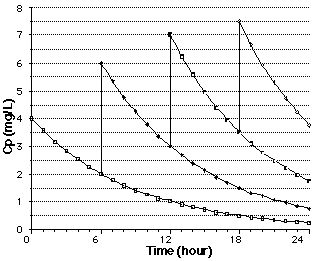
Figure XIV-9, Plot of Cp Versus Time Showing Doses Every Six Hours





After six hours the plasma concentration will fall to 2 mg/liter. If we give the same dose again the plasma concentration will increase by 4 mg/liter from 2 mg/liter to 6 mg/liter. Then after another half-life (6 hours) the plasma concentration will fall to 3 mg/liter. Again, another dose will increase the plasma concentration by 4 mg/liter to 7 mg/liter. After another half-life the plasma concentration will be 3.5 mg/liter. After repeated drug administration every six hours the plasma concentration will accumulate until it fluctuates between a maximum and minimum value of 8 mg/liter and 4 mg/liter. In this example the dose was given every drug elimination half-life of 6 hours.

Figure XIV-9, Plot of Cp Versus Time Showing Doses Every Six Hours
Plasma Concentration versus Time Plots
| Start | End | Concentration lost during dosage interval | |
| 4 | --> | 2 mg/L | 2 mg/L |
| 6 | --> | 3 | 3 |
| 7 | --> | 3.5 | 3.5 |
| 7.5 | --> | 3.75 | 3.75 |
| ... | |||
| 8 | --> | 4 | 4 <- which is the same as the concentration increase caused by each dose |
So far we can see that if we give repeated doses before the body can eliminate the previous doses then we will get accumulation of the drug. We have also seen that when we have first order elimination this accumulation will not proceed indefinitely but will level off.
Copyright 2001 David W.A. Bourne
This page was last modified: 12 February 2001




